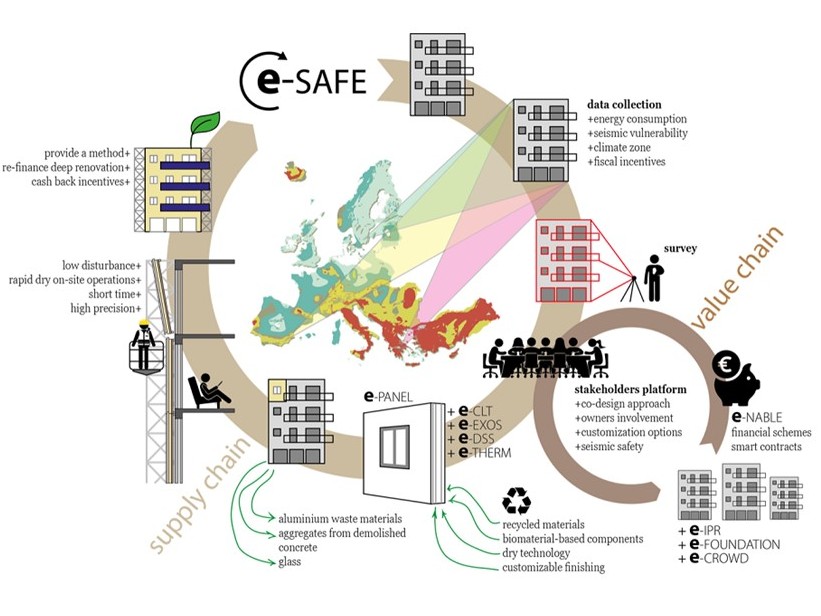Energy and seismic renovation: the European H2020 programme finances the e-SAFE project
Energy-efficient renovation plays a crucial role in achieving the EU's long-term climate and energy goals, which require an upgrade of the EU's housing stock. However, many European countries are strongly prone to earthquakes. In these earthquake-prone areas it is therefore necessary to apply renovation solutions that combine energy efficiency and anti-seismic retrofitting measures. The e-SAFE project aims to develop an innovative system to combine the earthquake-proof, energy-efficient and architectural renovation of existing buildings. This system will ensure both compliance with energy saving and earthquake-proof safety objectives, as well as greater aesthetic and functional attractiveness, internal comfort, reduced construction time and costs, less inconvenience for occupants, accessible financing solutions and innovative business models. All these factors make the proposed system competitive in the European construction market, with the aim of meeting long-term climate and energy objectives. With a funding of 4 million euros, the project will last 48 months and will involve 12 partners from 8 European countries, coordinated by the Department of Civil Engineering and Architecture of the University of Catania. The project focuses on buildings with reinforced concrete load-bearing structures, built in the period 1950-1990 that represent more than 50% of the current residential heritage. In European countries at seismic risk these buildings are energy intensive and seismically vulnerable. E-SAFE is based on a multidisciplinary methodology that benefits from the full integration between technological innovation and process innovation in which traditional modelling and experimental research are integrated with tools to promote financial feasibility, knowledge co-production, mutual learning and public engagement. "The result of the project - said the project coordinator, Prof. Margani - is an abacus of innovative tailor-made and integrated solutions for energy efficiency and earthquake-proof renovations using recyclable biomaterials. The technological systems that e-SAFE will develop will also improve the internal comfort by significantly reducing the primary energy demand. The innovation process includes a co-design protocol with residents and developers, tailor-made financial solutions to facilitate the investment, including the reuse of e-SAFE royalties. The integration of a public involvement protocol will transform each redevelopment project into an important opportunity to raise public awareness of the importance of decarbonisation and seismic safety, while improving the city's image and market opportunities". From the technological point of view, the innovative idea of e-SAFE is to cover the outer shell of buildings with modular panels for thermal-acoustic insulation (e-PANEL) with a structural system that increases seismic performance, according to two basic solutions (e-CLT and e-EXOS), applicable to most buildings and adaptable to the specific level of seismicity and other boundary conditions. The technical solutions are completely based on prefabricated wood-based components and dry technologies and are implemented operating exclusively from outside the buildings. Therefore, compared to the current combined energy efficiency and seismic retrofit, the e-SAFE solution is faster, cheaper and less invasive for residents. The project will verify the effectiveness and replicability of the proposed methodology in 3 selected pilot projects in European seismic regions. The aim is to identify and modify potential drawbacks that could arise during co-design, installation and operation, but also to evaluate the energy, seismic and comfort performance guaranteed on site.



